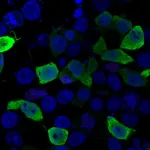(Press-News.org) New York, NY (March 16, 2023) – Using a new computational approach they developed to analyze large genetic datasets from rare disease cohorts, researchers at the Icahn School of Medicine at Mount Sinai and colleagues have discovered previously unknown genetic causes of three rare conditions: primary lymphedema (characterized by tissue swelling), thoracic aortic aneurysm disease, and congenital deafness. The work was done in collaboration with colleagues at the University of Bristol, UK; KU Leuven, Belgium; the University of Tokyo; the University of Maryland; Imperial College London, and others from around the world.
An enhanced understanding of the functions of the genes involved in these and other disorders could pave the way for the development of treatments. The findings were published in the March 16 online issue of Nature Medicine https://www.nature.com/articles/s41591-023-02211-z [DOI: 10.1038/s41591-023-02211-z].
Rare diseases affect approximately 1 in 20 people, but only a minority of patients receive a genetic diagnosis. Fewer than half of the 10,000 recorded rare diseases have a known genetic cause. Genome sequencing of large cohorts of rare disease patients provides a route toward discovering the genetic causes that remain unknown. However, large genetic datasets are challenging to work with, slowing down research significantly, say the investigators.
“While rare diseases are individually rare, collectively they are quite common. It is important for our understanding of human biology and for the development of diagnostics and therapeutics that the remaining causes are found,” said senior study author Ernest Turro, PhD, Associate Professor of Genetics and Genomics Sciences at Icahn Mount Sinai. “Many people with a rare disease struggle for many years to obtain a genetic diagnosis. By developing and applying statistical methods and computational approaches to find new causes of rare diseases, we hope to expand knowledge of the underlying causes of these diseases, hasten the time to diagnosis for patients, and pave the way for the development of treatments.”
The investigators studied a collection of 269 rare disease classes using data from 77,539 participants in the 100,000 Genomes Project, one of the largest datasets of phenotyped and whole-genome-sequenced rare disease patients. The researchers identified 260 associations between genes and rare disease classes, including 19 associations previously absent from the literature. Through an international academic collaboration, the authors validated the three most plausible novel associations by identifying additional cases in other countries and through experimental and bioinformatic approaches.
“We hope that our computational framework will help accelerate the discovery of the remaining unknown etiologies of rare diseases across the board. For now, we expect that a genetic diagnosis will be attainable for certain families with previously unexplained primary lymphedema, thoracic aortic aneurysm disease, and deafness,” said Daniel Greene, PhD, a postdoctoral fellow at Icahn Mount Sinai and lead author of the study. “We also plan to apply our methods in novel ways and in other datasets, with the aim of continuing to unravel the genetic causes of rare diseases.”
The paper is titled “Genetic association analysis of 77,539 genomes reveals rare disease etiologies.”
For the complete list of authors, and details on funding, see the paper at https://www.nature.com/articles/s41591-023-02211-z.
The National Organization for Rare Disorders has designated the Division of Medical Genetics and Genomics at The Mount Sinai Hospital as a Rare Disease Center of Excellence.
About the Icahn School of Medicine at Mount Sinai
The Icahn School of Medicine at Mount Sinai is internationally renowned for its outstanding research, educational, and clinical care programs. It is the sole academic partner for the eight- member hospitals* of the Mount Sinai Health System, one of the largest academic health systems in the United States, providing care to a large and diverse patient population.
Ranked 14th nationwide in National Institutes of Health (NIH) funding and among the 99th percentile in research dollars per investigator according to the Association of American Medical Colleges, Icahn Mount Sinai has a talented, productive, and successful faculty. More than 3,000 full-time scientists, educators, and clinicians work within and across 34 academic departments and 35 multidisciplinary institutes, a structure that facilitates tremendous collaboration and synergy. Our emphasis on translational research and therapeutics is evident in such diverse areas as genomics/big data, virology, neuroscience, cardiology, geriatrics, as well as gastrointestinal and liver diseases.
Icahn Mount Sinai offers highly competitive MD, PhD, and Master’s degree programs, with current enrollment of approximately 1,300 students. It has the largest graduate medical education program in the country, with more than 2,000 clinical residents and fellows training throughout the Health System. In addition, more than 550 postdoctoral research fellows are in training within the Health System.
A culture of innovation and discovery permeates every Icahn Mount Sinai program. Mount Sinai’s technology transfer office, one of the largest in the country, partners with faculty and trainees to pursue optimal commercialization of intellectual property to ensure that Mount Sinai discoveries and innovations translate into health care products and services that benefit the public.
Icahn Mount Sinai’s commitment to breakthrough science and clinical care is enhanced by academic affiliations that supplement and complement the School’s programs.
Through the Mount Sinai Innovation Partners (MSIP), the Health System facilitates the real-world application and commercialization of medical breakthroughs made at Mount Sinai. Additionally, MSIP develops research partnerships with industry leaders such as Merck & Co., AstraZeneca, Novo Nordisk, and others.
The Icahn School of Medicine at Mount Sinai is located in New York City on the border between the Upper East Side and East Harlem, and classroom teaching takes place on a campus facing Central Park. Icahn Mount Sinai’s location offers many opportunities to interact with and care for diverse communities. Learning extends well beyond the borders of our physical campus, to the eight hospitals of the Mount Sinai Health System, our academic affiliates, and globally.
-------------------------------------------------------
* Mount Sinai Health System member hospitals: The Mount Sinai Hospital; Mount Sinai Beth Israel; Mount Sinai Brooklyn; Mount Sinai Morningside; Mount Sinai Queens; Mount Sinai South Nassau; Mount Sinai West; and New York Eye and Ear Infirmary of Mount Sinai.
-####-
END
Fast facts:
The global shortage of fresh water currently affects hundreds of millions of people around the world, and it is estimated that by 2025, 1.8 billion people will experience severe water scarcity and hunger due to loss of fertile farming lands caused by droughts.
The discovery of alternative water-harvesting technologies holds the potential to alleviate the foreseeable socioeconomic impacts of severe water scarcity.
Abu Dhabi, UAE, March 16 2023: Researchers of the Smart Materials Lab (SML) and the Center for Smart Engineering Materials (CSEM) at NYU Abu Dhabi (NYUAD) have reported a novel method of harvesting water from ...
HOUSTON ― In a Phase II trial led by researchers from The University of Texas MD Anderson Cancer Center, adding ipilimumab to a neoadjuvant, or pre-surgical, combination of nivolumab plus platinum-based chemotherapy, resulted in a major pathologic response (MPR) in half of all treated patients with early-stage, resectable non-small cell lung cancer (NSCLC).
New findings from the NEOSTAR trial, published today in Nature Medicine, provide further support for neoadjuvant immunotherapy-based treatment as an approach to reduce viable tumor at surgery and to improve outcomes in NSCLC. The combination also was associated with an increase in immune cell infiltration and a favorable gut microbiome ...
Leipzig. Intense fishing and overexploitation have led to evolutionary changes in fish stocks like cod, reducing both their productivity and value on the market. These changes can be reversed by more sustainable and far-sighted fisheries management. The new study by researchers from the German Centre for Integrative Biodiversity Research (iDiv), Leipzig University and the Institute of Marine Research in Tromsø, which was published in Nature Sustainability, shows that reversal of evolutionary change would only slightly reduce the profit of fishing, but would help regain and conserve natural genetic diversity.
The impact of global fisheries on marine ecosystems ...
A research team from the University of Cologne (Germany) and the University of St Andrews (Scotland) has shown in a new study how a fundamental physical concept can be used to boost the colour brilliance of smartphone, computer or TV screens without cutbacks in energy efficiency. The results have been published in Nature Photonics.
Organic light-emitting diodes (OLEDs) have conquered the market for displays in recent years – from high-resolution smartphone to wall-sized television screens. However, industry and science face several challenges in creating the next generation of devices ...
Hot topic – how heat flow affects the Earth’s magnetic field
Compass readings that do not show the direction of true north and interference with the operations of satellites are a few of the problems caused by peculiarities of the Earth’s magnetic field.
The magnetic field radiates around the world and far into space, but it is set by processes that happen deep within the Earth’s core, where temperatures exceed 5,000-degress C.
New research from geophysicists at the University of Leeds suggests that ...
A new method to cure HIV—by transplanting HIV-resistant stem cells from umbilical cord blood—has yielded long-term successful results, say scientists. The approach was successfully used to treat the “New York patient,” a middle-aged woman with leukemia and HIV who self-identifies as mixed race, who has been without HIV since 2017. Using stem cells from cord blood rather than from compatible adult donors, as has been done previously, increases the potential to cure HIV via stem cell transplantation ...
The Ashaninka are the most numerous Indigenous people living in the rainforests of Peru and Brazil where they inhabit a crucial area between the Andes and sources of the Amazon River. And yet, despite the size of the population and their importance in the past and present, their genetic history has remained understudied.
Now a team of researchers reporting in the journal Current Biology on March 16 has analyzed the genomes of more than 50 individuals to clarify the group’s interactions with nearby South American regions, including Central America and the Caribbean. ...
Geneticists have written new chapters in the reconstruction of pre-colonial Americas history after using DNA from the indigenous Ashaninka people from Amazonian Peru. They have discovered previously unexpected levels of genetic variation in this group and uncovered a strong hint that these people were involved in a South-to-North migration that led to the transition from an archaic to ceramic culture in the Caribbean islands.
The dramatic impact of European colonisation during the second half of the last millennium has strongly influenced the genetic history of the Americas, making the reconstruction ...
About The Study: This survey study found that people with disabilities were more likely to report household employment loss and financial hardship during the initial COVID-19 pandemic, which are especially pronounced among racial and ethnic minority respondents. These findings suggest people with disabilities may be disproportionately affected by the initial pandemic and may require additional resources and policy strategies (e.g., training programs, workplace accommodations) as several labor markets adapt to the pandemic (e.g., shifting to remote working).
Authors: Kea Turner, Ph.D., M.P.H., M.A., of the H. Lee Moffitt Cancer Center ...
About The Study: In this study of 722,000 hospitalization episodes, patients with Alzheimer disease and related dementias (ADRD) had higher readmission rates and overall readmission and episode costs than their counterparts without ADRD. Hospitals may need to be better equipped to care for patients with ADRD, especially in the post-discharge period. Considering that any type of hospitalization may put patients with ADRD at a high risk of 30-day readmission, judicious preoperative assessment, postoperative discharge, and ...




